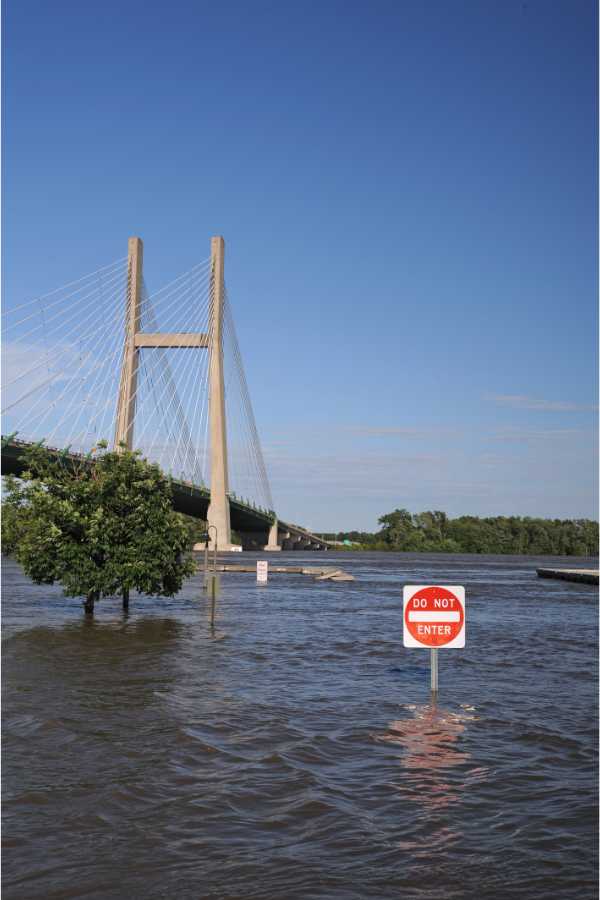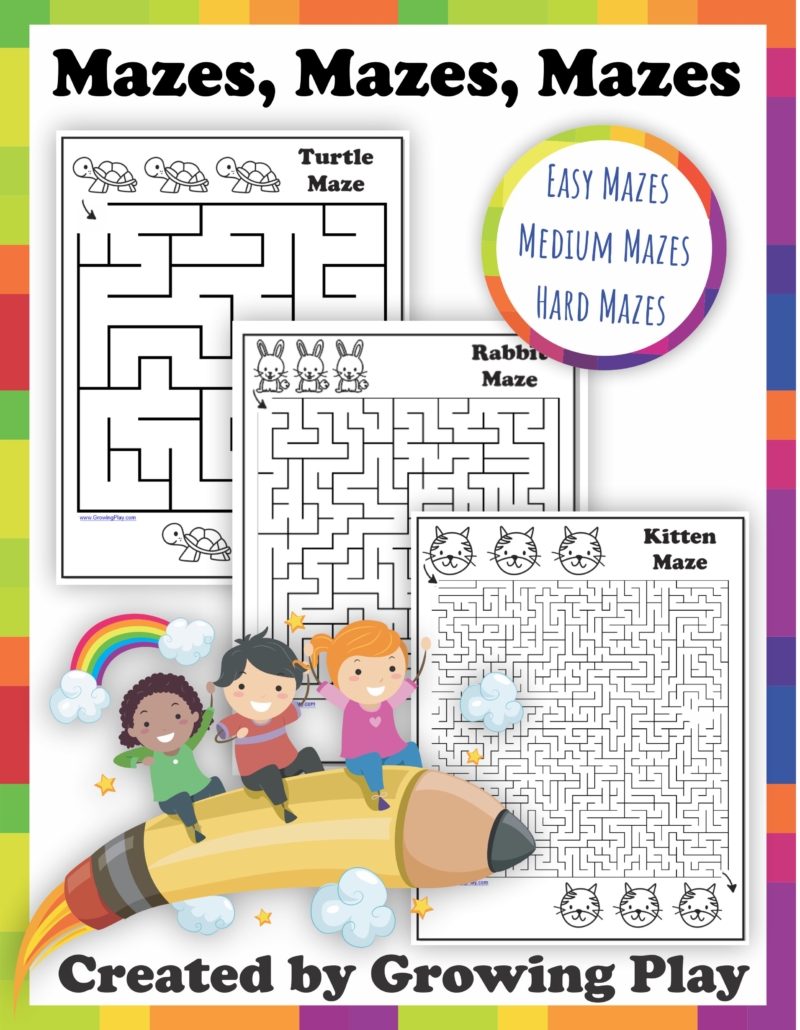Flood Facts For Kids

Did you know that floods are one of the most common natural disasters in the world? They can happen anywhere there is water, and they often cause a lot of damage. There are plenty of flood facts for kids to learn.
In this blog post, we will discuss some basics about floods: what they are, how they form, and what to do if one happens near you. We will also include some fun facts about floods for kids. Let’s get started!

Printable Mazes PDF
Flood Facts for Kids – What is a Flood?
A flood is a natural disaster that occurs when water levels rise and cover large areas. Floods can occur for many different reasons, such as heavy rain or snowfall, melting glaciers, or the overflow of rivers and lakes. They can also result from storms, tsunamis, mudslides, and other extreme weather events.
How do Floods Form?
There are a few different ways that floods can form. One common cause is excessive rainfall or snowmelt, which can overwhelm rivers and streams and overflow onto nearby land. Another cause is the breaching of a dam or levee, which allows water to flow outward in large amounts. Finally, floods can occur when groundwater becomes saturated and reaches the ground.
Flood Effects
Unfortunately, floods can cause a lot of damage to cities and towns. Floods can destroy homes and buildings and disrupt transportation systems. It can contaminate drinking water supplies and displace large numbers of people. They can also lead to serious injuries and even death if they are especially severe.
Despite their destructive nature, floods have some positive effects on the environment. For example, they can help recharge groundwater supplies and replenish nutrients in the soil. This will increase fertility and promote plant growth. They can also flush out pollutants and debris, helping to keep our waterways clean and safe.
Causes of Floods
Here are some of the common causes of floods:
1. Heavy rainfall or snowfall can cause floods by overwhelming rivers and streams, causing them to overflow onto nearby land. This is especially prevalent where a steep topography is present because rain or snowfall can build up and cause rivers to rise.
2. When water accumulates behind the ice wall due to melting glaciers, the ice wall breaks and floods the surrounding area. This is especially prevalent in mountainous regions that are subject to glacier melting.
3. Overflow of rivers and lakes can happen when water levels rise too high, spilling out onto the surrounding land. This results from heavy rainfall or snowmelt, which can accumulate in low-lying areas and cause rivers to flood their banks.
4. Flood waters can also result from storms, tsunamis, and mudslides. This can lead to high water levels that cause widespread destruction.
5. When the ground is wet, groundwater becomes saturated and rises to the surface, resulting in flooding. This results from heavy rainfall, snowmelt in low-lying areas, and other extreme weather events.
Flash Floods
A flash flood is a type of flooding that is a short-lived, sudden flood that can occur when water levels rise. Flash flooding forms over mountainous areas or in low-lying areas where the ground has poor drainage.
Coastal Floods
Coastal flooding results from storm surges and high tides, which can cause flooding along the coast. They can be very destructive, particularly when combined with heavy rainfall or snowmelt.
River Floods
A river flood occurs when the water levels of rivers and streams rise too high, spilling over onto nearby land. They can result from extreme rainfall, melting glaciers, excess runoff from irrigation systems, or other causes.
Urban floods
Urban flooding occurs when heavy rainfall or snowmelt leads to catastrophic flooding in cities and towns. They can be very destructive, as they often cause severe property damage and displace large numbers of people.
Flood Facts for Kids – What to Do in a Flood Situation?
If you are in a flood zone, there are a few things that you should keep in mind to stay safe and reduce flood damage. The first step is to be ready: have an emergency kit with supplies like food, water, medications, and first aid materials.
You should also make sure you have an emergency plan. Once a flood occurs, listen to local authorities for instructions on what to do and where to go.
In addition to these tips, there are other actions you may take to lessen flood damage. Elevating furniture, electronics, and papers in the event of water damage is one of these. Move your valuables to higher ground if possible. You can also build barriers around your property using sandbags or plywood.
So if you live in an area prone to groundwater floods, it is a good idea to take the necessary precautions and prepare for an emergency.
Preventing Floods
There are many steps to prevent the occurrence of historic floods, including building better flood-prevention infrastructure, such as levees and dams, managing urban drainage systems, and taking measures to reduce our impact on the environment.
For example, we can reduce emissions from stormwater runoff by using green infrastructure and rain gardens to collect excess water or planting trees that help absorb excess rainfall.
We can also lessen our carbon footprint by using less energy and, whenever possible, switching to clean, renewable energy. By taking these measures, we can help reduce the impact of minor flooding on our communities. This effort will also protect vulnerable populations from its destructive effects.
Conclusion
This post has provided an overview of floods, the types that can occur, and strategies for preventing these natural disasters. Whether you live in a flood zone or not, you should prepare and take the necessary steps to reduce your risk of flooding.
By taking the necessary steps and preparing for an emergency, we can help reduce the impact of flooding on our communities. This way, we can protect ourselves from its devastating effects.
Check out these fun facts for kids here and browse all the other topics at the bottom of the post.
Read more about other weather conditions:
Download FREE RAIN ACTIVITIES here.


